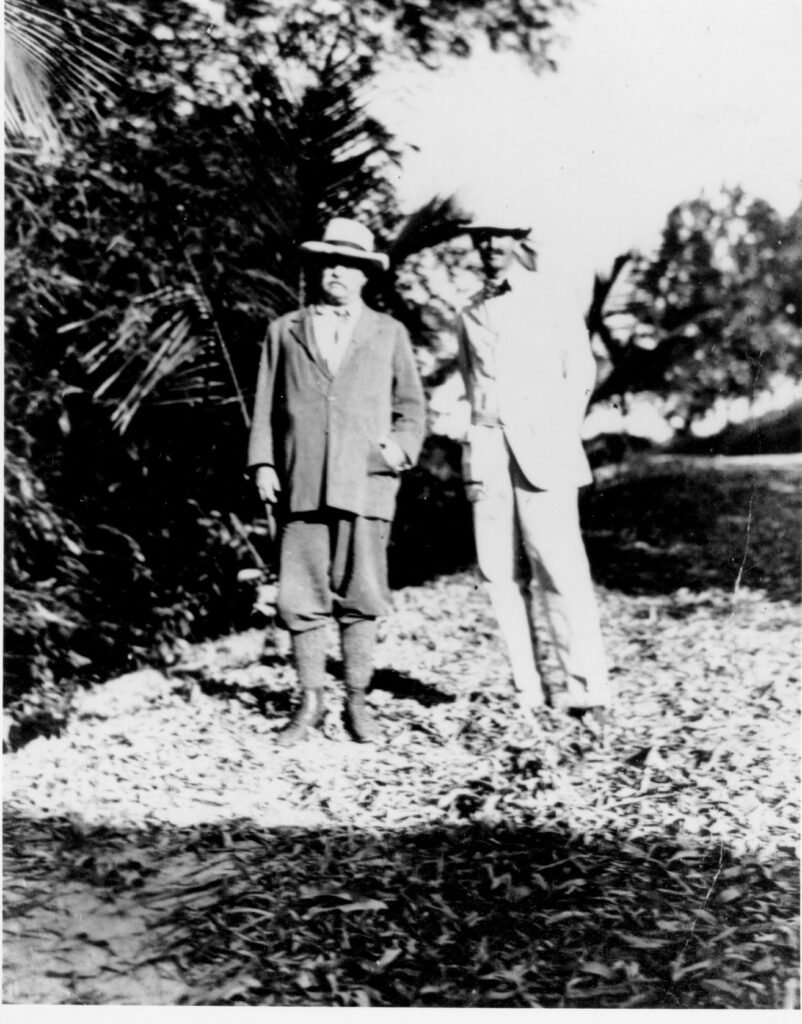- The Army Ant Death Spiral
- The Bathysphere
- Tetrapteryx

The Army Ant Death Spiral
Renowned ecologist and conservationist William Beebe’s 1921 tome, Edge of the Jungle, chronicled an incredible event in the teeming forests of Kartabo in Guyana. In the recorded history of entomology, no human had witnessed anything like it. He wrote:
Yet, whatever the simile, the net of unconscious precedent is too closely drawn, the mesh of instinct is too fine to hope for any initiative. This was manifested by the most significant and spectacular occurrence I have ever observed in the world of insects.
One year and a half ago I studied and reported upon, a nest of Ecitons or army ants...the Ecitons, in late afternoon, raided a small colony of
Wasps-of-the-Painted-Nest...Late that night, our lanterns showed the remnants
of the Eciton army wandering aimlessly about, making near approach impossible,
but apparently lacking any definite concerted action.At six o'clock the following morning I started out for a swim, when at the foot of the laboratory steps I saw a swiftly-moving, broad line of army ants on safari, passing through the compound to the beach. I traced them back under the servants' quarters, through two clumps of bamboos to the outhouse. Later I followed along the column down to the river sand, through a dense mass of underbrush, through a hollow log, up the bank, back through light jungle--to the outhouse again, and on a large fallen log, a few feet beyond the spot where their nest had been, the ends of the circle actually came together! It was the most astonishing thing, and I had to verify it again and again before I could believe the evidence of my eyes. It was a strong column, six lines wide in many places, and the ants fully believed that they were on their way to a new home, for most were carrying eggs or larvæ, although many had food, including the larvæ of the Painted Nest Wasplets. For an hour at noon during heavy rain, the column weakened and almost disappeared, but when the sun returned, the lines rejoined, and the revolution of the vicious circle continued.There were several places which made excellent points of observation, and here we watched and marveled. Careful measurement of the great circle showed a circumference of twelve hundred feet. We timed the laden Ecitons and found that they averaged two to two and three-quarter inches a second. So a given individual would complete the round in about two hours and a half.All the afternoon the insane circle revolved; at midnight the hosts were still moving, the second morning many had weakened and dropped their burdens, and the general pace had very appreciably slackened. But still the blind grip of instinct held them. On, on, on they must go! Always before in their nomadic life there had been a goal--a sanctuary of hollow tree, snug heart of bamboos--surely this terrible grind must end somehow. In this crisis, even the Spirit of the Army was helpless. Along the normal paths of Eciton life he could inspire endless enthusiasm, illimitable energy, but here his material units were bound upon the wheel of their perfection of instinct. Through sun and cloud, day and night, hour after hour there was found no Eciton with individual initiative enough to turn aside an ant's breadth from the circle which he had traversed perhaps fifteen times: the masters of the jungle had become their own mental prey.

Beebe and crew, through the tenacity of observation, beheld what we now call an ant mill or a death spiral. This first sighting’s description is nearly as outrageous as its discovery. The circumference of that circle was almost a quarter-mile, which could have easily hidden the true geometry in the bungle of the jungle. Thankfully, Beebe was no novice watcher. As the pioneer of observing specific areas to gain an ecological understanding of totality, Beebe knew to be thorough and patient. This reputation also lends credence to the almost unbelievable size of this initial death spiral; they are usually far smaller.
A mill is a phenomenon of self-organization in ant colonies. Usually, this self-organization is beneficial to the ants. Most army ants are blind, yet, thanks to pheromones, one ant can follow another automatically. Out of the chaos of the horde, a colonial order can arise thanks to local interactions.
In good times, these machinations lead to food or to shelter. For army ants, the regiments can raid a wasp’s nest with mechanical precision.
When times are bad, the ants might devolve into a death spiral. And, as the name suggests, that isn’t good.
Never cross the streams.
If one member’s movement deviates from the blockchain, no matter the reason, the result can be catastrophic for the entire colony. If the members behind you follow the new lead, feedback loops often become fatal. The ants are designed to follow the programming no matter how long it takes. As in Beebe’s story, the ants will revolve around a false center until they no longer have the energy to continue. Exhaustion eventually wins and the ants perish.
It seems an odd and especially fatal problem to evolve. Biologists believe the ants fare far better in groups than they do alone, hence the programming. Blind and tiny, no ant is an island. Over the long run, the benefits of following the group outweigh the occasional collapse of the community.
This phenomenon is simultaneously magnetically mesmerizing and tragically terrible, like watching the swirling collapse of a galaxy knowing that each speck of light is a living being.
The death spiral also joins the long list of natural wonders that opens the door to future explorations. Discovering William Beebe lightens my ignorance, opens enlightening doors, and produces another stupendous writer on the tangible world. The world’s greatest nature essayists manage to capture the awe humans experience in ways that seem ineffable to the rest of us. Reading through Beebe’s biography, he had a lust for Earth and its inhabitants that shines through his prose.
He trailblazed experimental processes in ecology. Beebe was one of the first and most important “popular” science writers, paving the way for Rachel Carson, Stephen Jay Gould, Carl Sagan, and Neil deGrasse Tyson. He promoted prescient theories on the evolution of flying in birds. He held the record for the deepest dive for over a decade. Beebe discovered hundreds of species of birds, insects, and fish. He knew Teddy Roosevelt and A.A. Milne. His story could provide dozens of articles for this project!


The end of Beebe’s tale of the army ants is a perfect coda for the article and an example of his penchant for effervescent prose that illuminates the connections of all things in the universe; let the galley sail on!
Fewer and fewer now came along the well worn path; burdens littered the line of march, like the arms and accoutrements thrown down by a retreating army. At last a scanty single line struggled past--tired, hopeless, bewildered, idiotic and thoughtless to the last. Then some half dead Eciton straggled from the circle along the beach, and threw the line behind him into confusion. The desperation of total exhaustion had accomplished what necessity and opportunity and normal life could not. Several others followed his scent instead of that leading back toward the outhouse, and as an amoeba gradually flows into one of its own pseudopodia, so the forlorn hope of the great Eciton army passed slowly down the beach and on into the jungle. Would they die singly and in bewildered groups, or would the remnant draw together, and again guided by the super-mind of its Mentor lay the foundation of another army, and again come to nest in my outhouse?Thus was the ending still unfinished, the finale buried in the future--and in this we find the fascination of Nature and of Science. Who can be bored for a moment in the short existence vouchsafed us here; with dramatic beginnings barely hidden in the dust, with the excitement of every moment of the present, and with all of cosmic possibility lying just concealed in the future, whether of Betelgeuze, of Amoeba or--of ourselves? Vogue la galère!
Further Reading and Exploration
Edge of the Jungle by William Beebe – Project Gutenberg
Army Ants Trapped by Their Evolutionary History – National Center for Biotechnology Information
An entire world follows the march of the army ants – National Geographic














Pingback: Second Anniversary Issue – themountainsarecalling.earth
Pingback: Tetrapteryx – themountainsarecalling.earth